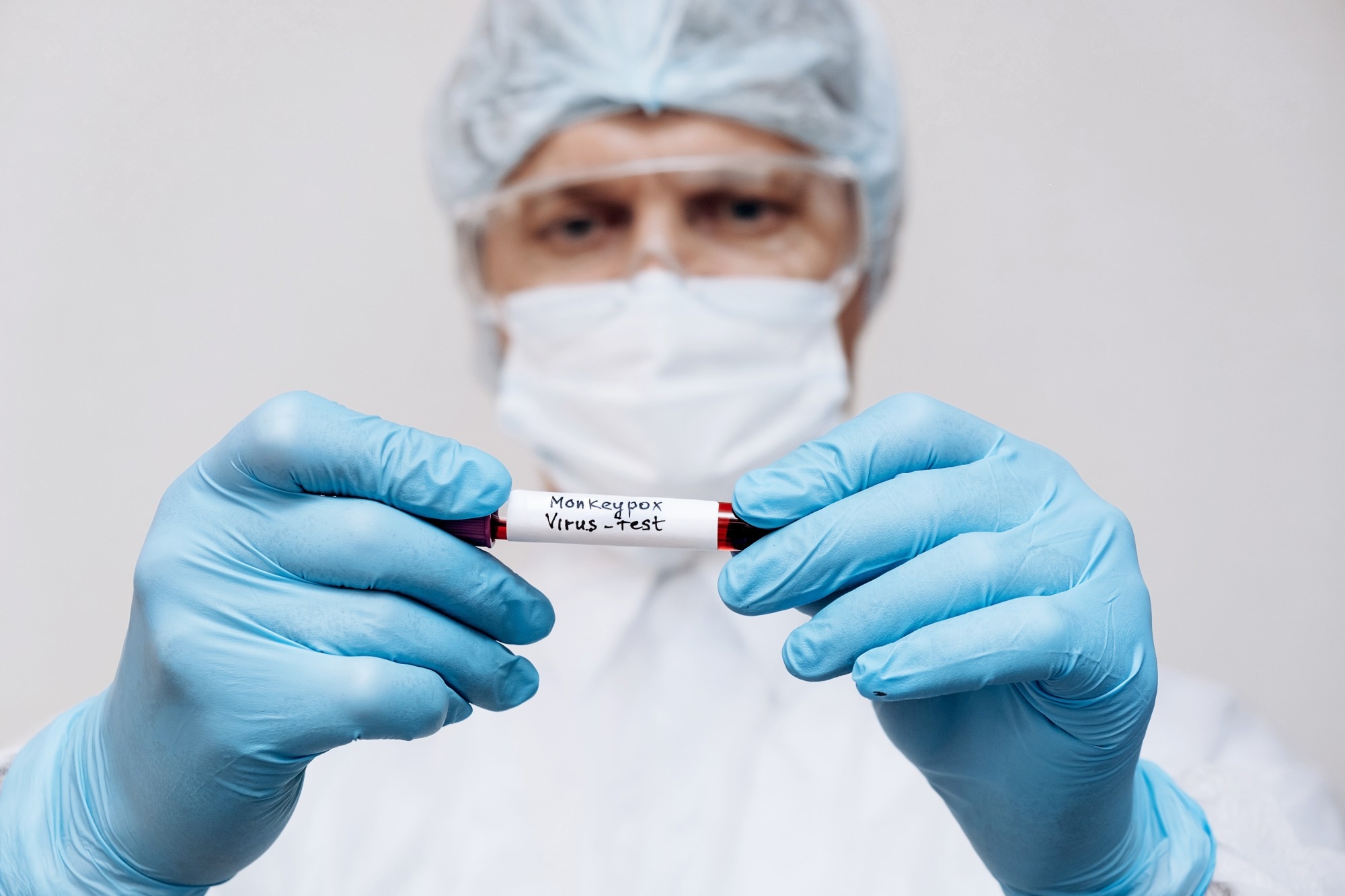In a recent report in the journal Travel Medicine and Infectious Disease, researchers introduced a compact rapid detection kit that tests for monkeypox virus using a combination of Recombinase Polymerase Amplification (RPA) and Clustered Regularly Interspaced Short Palindromic Repeats (CRISPR) technology.
 Study: Pocket lab for the rapid detection of monkeypox virus. Image Credit: Tatiana Buzmakova/Shutterstock
Study: Pocket lab for the rapid detection of monkeypox virus. Image Credit: Tatiana Buzmakova/Shutterstock
Background
The monkeypox outbreak has spread widely outside the endemic west and central African countries during 2022, and the World Health Organization (WHO) has now declared it a Public Health Emergency of International Concern. The etiological agent of monkeypox is the monkeypox virus belonging to the Orthopoxvirus genus.
The currently used test for detecting monkeypox is the polymerase chain reaction test (PCR), which amplifies Orthopoxvirus or specific monkeypox virus deoxyribonucleic acid (DNA). However, PCR is a tedious process requiring a thermocycler, trained personnel, and a laboratory.
The early detection and containment of infected individuals are imperative for controlling a disease outbreak. Immunoassays such as lateral flow strips are simpler and faster than PCRs but have higher cross-reactivity for orthopoxviruses, making the precise detection of monkeypox difficult. Therefore, a technology that rapidly detects monkeypox and provides accurate and reliable results is essential.
Detection mechanism
In the present study, the researchers developed a rapid detection kit or pocket lab to test for the monkeypox virus. The detection kit uses the principles of RPA and CRISPR technology to increase the specificity and sensitivity of the analysis. The RPA amplifies target genes of the monkeypox virus, which are scanned by the CRISPR guide ribonucleic acid (RNA) and the CRISPR-associated protein 12a (Cas12a) enzyme.
The CRISPR/Cas12sa-mediated cleavage of the sequence occurs only when the target monkeypox amplicons are detected, eliminating the possibility of non-specific signals. The cleavage results in fluorescence, indicating monkeypox-positive samples.
Pocket lab
The kit weighed 500 g, and the case was water-resistance and compact enough to fit inside a pocket. The components comprised two three-dimensional printed heating blocks — block A, which heats the samples to 80 °C for viral shell lysis, and block B, which heats the samples to 40 °C for DNA amplification.
The kit contained tubes with trehalose-protected lyophilized enzymes and sampling tubes with sodium chloride and magnesium acetate solution. A rehydration buffer containing primers and the fluorescent reporter, and an ultraviolet flashlight (UV) to detect the fluorescence were also included in the kit.
The testing process involves adding the sample to the sampling tube and using a heating block A to lyse the viral shell. The heated sample is added to the tube containing lyophilized enzymes, to which the rehydration buffer is added. Heating block B is then employed to amplify the target region. Finally, the UV flashlight is used to detect the fluorescence.
During the trial test, the researchers ran using pseudotyped monkeypox virus samples, the total time taken was 25 minutes, and samples with viral particles as low as ten were detected with accuracy.
Conclusions
To summarize, the researchers introduced a novel rapid detection kit that was compact and could be used to detect the monkeypox virus without the use of complicated instruments, trained technicians, or a laboratory set-up.
The detection kit uses the principles of RPA and CRISPR to amplify target regions of the monkeypox DNA and cleave it using the CRISPR/Cas12a complex, with a fluorescent reporter signaling the detection of monkeypox viral DNA.
The trials with the pseudotyped virus indicated successful and rapid detection of the monkeypox virus, suggesting the kit’s potential use for rapid testing of travelers and in areas that lack appropriate medical infrastructure and trained staff.